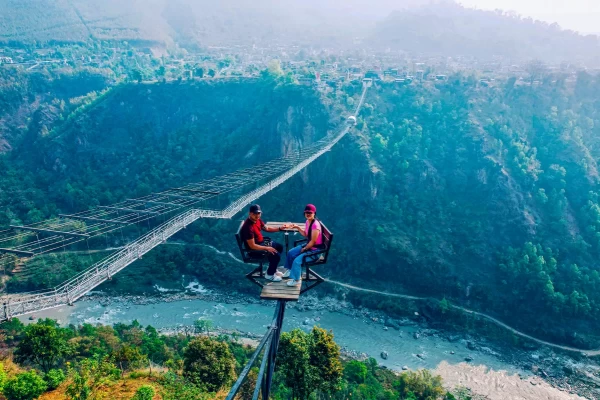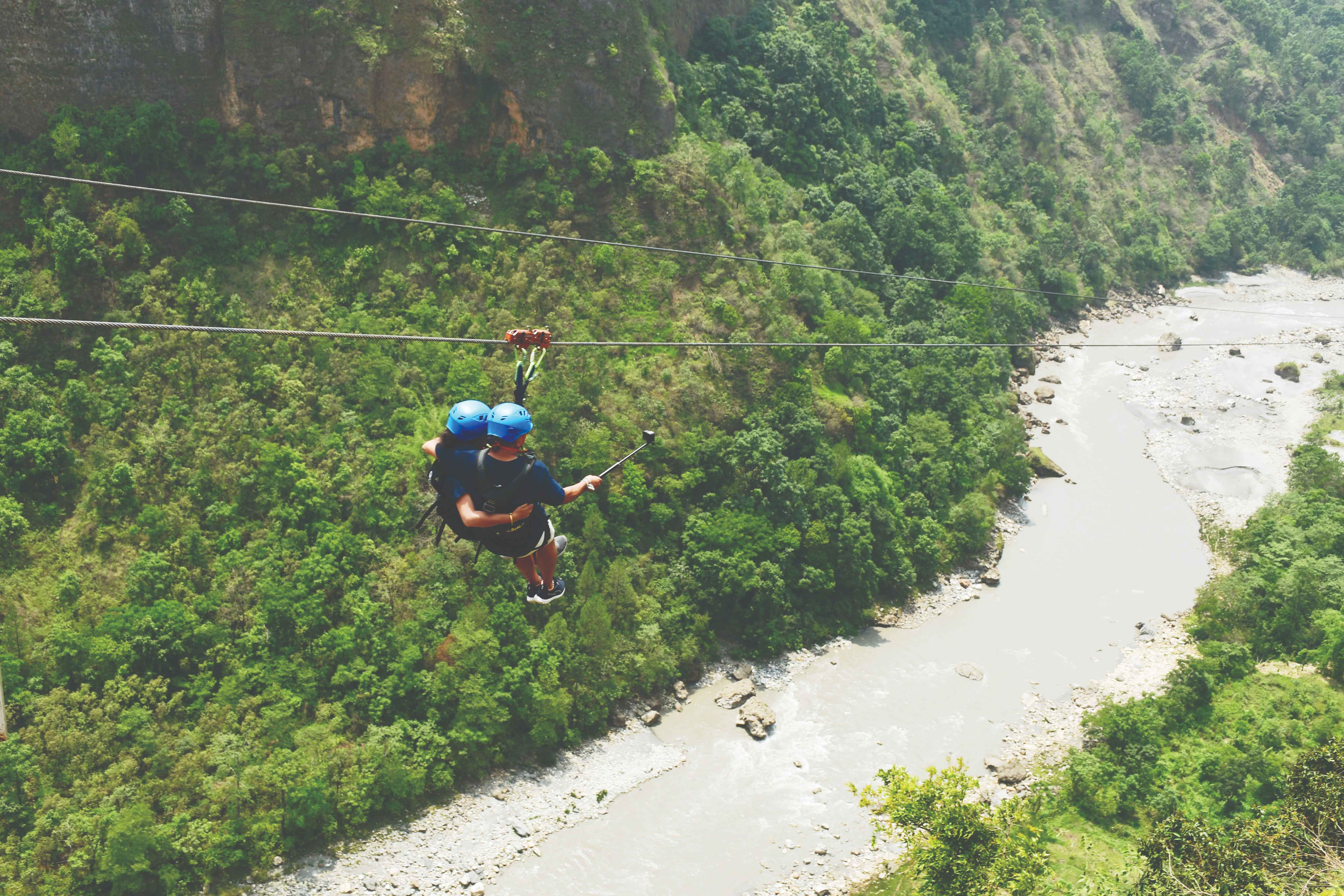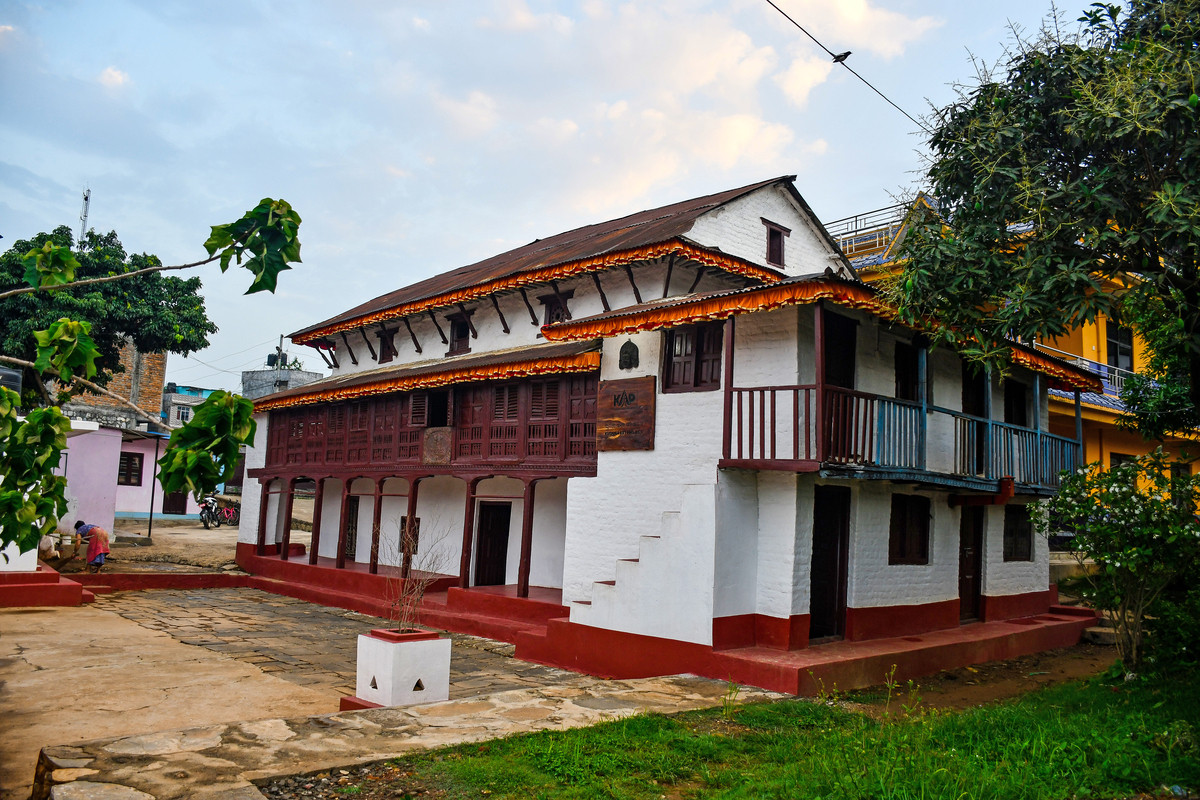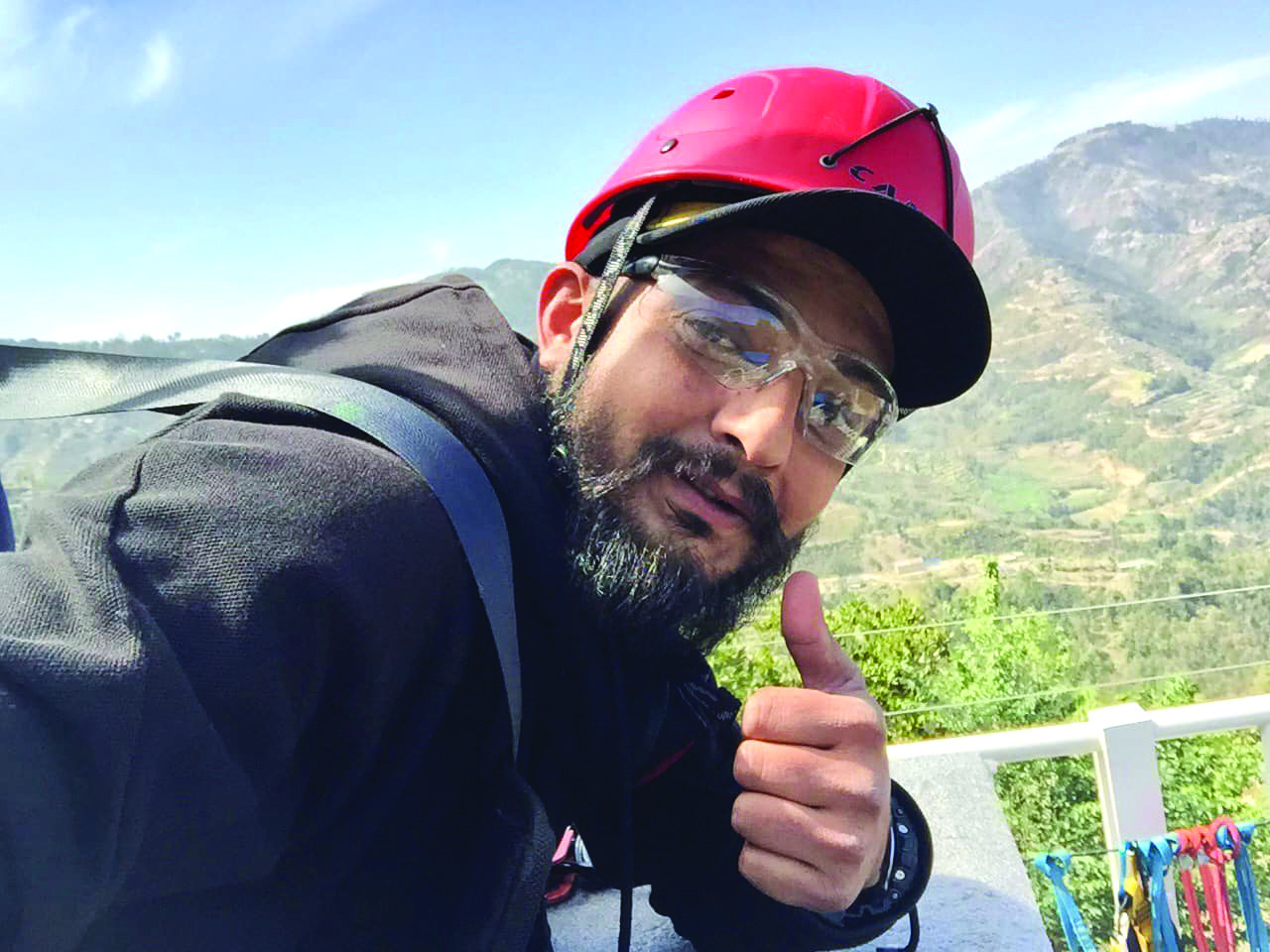Kushma Valley - A Center for Nature, Adventure and Spirituality

The charming valley of Kushma is situated in the lap of nature in the outskirts of Pokhara. It is nestled amongst the tall mountain ranges, aligned with tall cliffs, gushing rivers, and a lush-green environment. But nature is not the only wonder of Kushma, rather it is equally gaining recognition for the adventurous activities that it offers. Spread across a landscape of 93.18 square kilometers, Kushma Municipality was formed including 7 VDCs–Pang, Khurkot, Durlung, Shivalaya, Katuwa Chaupari, Pipaltari, and Pakuwa.
The Kali Gandaki River borders the valley to the west and the Modi river to the east. Kushma Bazaar is the headquarters of Parbat district. In ancient times the valley used to be called ‘Kushumpur’ in Sanskrit as it was abundant in fruits and ‘Kush’, a kind of plant. As the legend goes, it is believed that the goddess Parvati, after her bath at the river, came to Kushumpur to pluck the fruits. She took it to Gupteshwar cave where a meditating Lord Shiva blessed her. Since then, the place is considered sacred for Hindus. In the due course of time, it was commonly called “Kushma”.
This picturesque valley serves a majestic view of Mt. Machhapuchhre, Mt. Dhaulagiri and Mt. Nilgiri. The clean and fresh air of the village offers a number of ideal hiking routes. At the time when inter-district roads weren’t available, Kushma was an important trading spot of the west.
The local people from Myagdi, Mustang, Baglung, Rolpa, Dolpa, Rukum, and Jumla used to travel through Kushma to reach Palpa and then go further south to the Madhesh. Traders would also walk through the valley to reach Pokhara, Gorkha, Nuwakot, and then Kathmandu.
With the opening of other bus routes, the flow of traders passing through Kushma began to decline, restoring the peace the valley once held. But Kushma regained popularity after the establishment of ‘The Cliff’. In October 2020, Raju Karki of Sindhupalchowk founded ‘The Cliff’, a company based in Kushma which offers adventurous activities.
Since then, Kushma has become a hub for adventurous hearts, and its popularity has begun to grow nation-wide as well as around the world. Today, the bustles are back as Kushma now stands as an icon for nature, culture, spirituality, and adventure. Visitors can come here for a good adrenaline-pumping experience of the various activities offered here.

In terms of culture and history too, conservation efforts are going on. Art enthusiast and journalist RK Adipta Giri made the initiation to preserve a three-hundred-year-old house as the ‘Heritage Home’ and started the ‘Kushma Art Project’.
Through such efforts, Kushma has become one of the emerging tourism destinations of Nepal. It is high time for the government to officially recognize the valley as such. There is great potential for the valley to grow as a global tourist hub. At present, local and international visitors are fluttering into the valley.
It is also a famous stop-point for trekkers and travelers on the Lo- Manthang trek, Annapurna circuit trek, Dhaulagiri base camp trek and Gurja Valley trek.Kushma is an ideal spot to visit throughout the year, from summer to winter. Planning a 2-nights trip would be perfect to experience all that the valley has to offer. Take one day to witness the scenic views of the valley and dedicate the next day to adventure activities.
There are a few tourist hotels, resorts, guest houses and restaurants located at Kushma Bazaar. Hospitals and police offices are also located in the main bazaar area. From Kushma, one can also visit Baglung Kalika, Balewa, Panchakotdhaam, Beni bazaar, Tatopani Kunda (Hotwater springs), Pokhara, Galeshwordhaam and Muktinath.
The Cliff: Popular Tourist Attraction in Kushma
When Raju Karki established The Cliff, it lit up the valley to the point it stands as a popular tourist attraction today. The Cliff Pvt. Ltd. has been offering various adventure activities at Kushma. The 520m long bridge which connects Kushma Bazaar to Balewa is home to the fascinating bungee jump. The jump is taken from the middle of the bridge, 228 meters down to the emerald-green Kaligandaki River. The picture-perfect view of the wild river is what makes this bungee an experience of a lifetime. At present, the highest bungee is located in Macau, which is 235m high.
That makes this 228-meter-high bungee above Kaligandaki the second highest in the world. Across the bridge, you will witness the swing. The company claims that the swing is the tallest in the world, situated 228m above the Kaligandaki. Both bungee and swing can be done individually or as a couple. For less hair-raising adventurer, there are the family-friendly swing, guleli ping and the Wishing Hand attraction nearby. Sky chairs near the cliff also kicks in just the right amount of adrenaline. The company provides horse riding as well, which can be done by kids and adults, along the cliff above the river.
.jpg) Another attraction of The Cliff is the ‘sky rope cycling’. It is the highest point of cycling in the world, located 255m above with a length of 300m. The cycle and the cyclist are both connected to harnesses for safety. It operates like a train on a track. The fix-handled cycle runs along the rope.
Another attraction of The Cliff is the ‘sky rope cycling’. It is the highest point of cycling in the world, located 255m above with a length of 300m. The cycle and the cyclist are both connected to harnesses for safety. It operates like a train on a track. The fix-handled cycle runs along the rope.
The Sky Cafe is also a one-of-a-kind experience offered by The Cliff. It is a cafe attached to steel ropes. With the help of safety harnesses, the cafe offers its customers an experience of dining 255 meters above the ground. Up to 4 people can sit on one table at a time.
According to the company chief Raju Karki, all the adventures built here are operated with high safety machines and policies. Across the bridge on the Balewa side, lies ‘The Cliff Resort’ which is spread across 30 hectares. There are 21 safari tents in the resort with attached bathrooms where 60 people can stay at a time.
Zipline
Harness Pvt. Ltd. has brought zipline services above Kali Gandaki River. The company claims this to be the second longest zipline in the world, with a distance of 1480m situated at a height of 250 meters. Two people can experience it at the same time.
 Yantrik Pool
Yantrik Pool
On your trip to Kushma, the cable ropeway is something that ought not to be missed. Passengers get to travel 558m on the cable across Kushma-Balewa. The view of Kaligandaki from the top will for sure baffle you. At a time, up to 6 people can sit in the pod and it takes one minute to cross the river.
Tallest Suspension Bridges
One way to experience the massive cliffs and the spellbinding river is through the long suspension bridges. It takes a tough heart to peek from the bridge below to the wild, raging river.
A 351m long suspension bridge connects Kushma and Balewa above Kaligandaki. It lies over a height of 156m. Another bridge connects Kushma and Gyadi above Modi River which is about 335m long. It stands at the height of 144m from the river. Similarly, there is the bridge that connects Wada village and Mudikuwa which is 359m long and 155m above the river. Another 520m long bridge above the Kaligandaki was built for bungee jumping which is at the height of 228m.
Modi Beni Dhaam
The junction where Kali Gandaki River and Modi river meet is called Modi Beni. A temple of the Hindu God Narsingha is situated here, where giant statues of Lord Narasingha and Lord Shiva are built. There is a wharf on the riverside where the deceased people from the Kaski, Syangja, and Parbat districts are brought in for cremation and final prayers. During the occasion of Bhaisakh Sankranti, Ekadasi, and Maghe Sankranti, the temple becomes lively with people from the nearby regions coming to attend the auspicious festivals held here. The temple is resided by priests and spiritual women known as Maataas.
Caves
There are two main caves in Kushma–Alapeshwor and Gupteshwar. Along the Kaligandaki River, near the Kushma bazaar, lies the 1200m long Gupteshwar cave. Thanks to the availability of electricity inside the cave, it is feasible to take a tour. A 30-minute walk from the Kushma bazaar will take you to the one-kilometer long Alapeshwor Cave. Here, you will discover a waterfall and a lake nestled inside the Alapeshwor Cave.  Both caves hold strong religious significance and are home to the statues of Hindu deities, Lord Shiva, Parvati, Ganesh, Pandav, Saraswati, etc. Bats are another attraction inside the caves.
Both caves hold strong religious significance and are home to the statues of Hindu deities, Lord Shiva, Parvati, Ganesh, Pandav, Saraswati, etc. Bats are another attraction inside the caves.
Sahasradhara
You will spot magical small streams as you go from Kushma to Baglung or Beni. At first glance, they look like tiny shimmering waterfalls that are sure to cast a spell on you. Hindus believe that taking a bath in these streams gives salvation as the pure water descend from the hills. 108 taps and a bathing center have been built here for this purpose. Taking a dip here would add to your adventure here at Kushma.
Rafting
The Kaligandaki River is popular for rafting. The rafting begins from Maaldhunga of Parbat district, touching Nayapul and ends in Syangja. Experiencing the untamed yet captivating water waves of this river is a must-have experience.
Shatabdi Ghar
A three hundred year old house situated in Majhgaun, Kushma (near Shivalaya Chowk) has been branded as “Shatabdi Ghar”. This traditional house was constructed from stones, mud and wood but has a tin roof. It also has a verandah, courtyard and other structures.
The unique house which is in ownership of a local resident, Ram Giri was a government house of the Panchayat Era. The Kushma Art Project has rented the house for 15 years and has preserved it. By storing the traditional utensils, costumes, weapons and different musical instruments on the verge of extinction, this house is gradually transforming into a museum.  Yet the house itself is already worthy of attention. A library and Kusumpur theater are also being imagined. Also, a residence is ongoing construction for the researchers who work in the art sectors. The courtyard is in the process of being transformed into an art hub where different activities related to art works will be conducted. To sum up, it will be developed into a significant place for art and knowledge. Visitors these days click photos around the Shatabdi Ghar, make Tiktok videos, and also go live on facebook. The Shatabdi Ghar conveys the message that to make a city beautiful there must be the existence of culture, heritage and civilization.
Yet the house itself is already worthy of attention. A library and Kusumpur theater are also being imagined. Also, a residence is ongoing construction for the researchers who work in the art sectors. The courtyard is in the process of being transformed into an art hub where different activities related to art works will be conducted. To sum up, it will be developed into a significant place for art and knowledge. Visitors these days click photos around the Shatabdi Ghar, make Tiktok videos, and also go live on facebook. The Shatabdi Ghar conveys the message that to make a city beautiful there must be the existence of culture, heritage and civilization.
Durlungkot
Towards the north of Kushma Bazaar, lies Durlungkot (1700m). It is an ideal spot to get away from the heat of the bazaar and take a breath of fresh air blowing from the tallest mountains like Macchapucchre, Annapurna, Dhaulagiri, and many more. Centuries ago, Durlungkot was ruled by the Malla Kings. A temple is situated amongst the lush greenery of the forests blanketing the hills. The distance between Kushma bazar to Durlungkot is 11 km.
Hiking
The hills surrounding the valley have a series of hiking trails for explorers. The peaceful environment and the bewitching nature abundant of different plant and bird species will give you a joyful experience of rural life on every trail. There are routes ranging from 3 hours to 6 hours and leading to places like Dahare Deurali, Panchase, Hampaal, Durlungkot and Halljure etc. One of the popular hiking routes is a circuit around the Kushma bazaar itself. It is a 4-hour walk that touches the Chuwa area, Dobilla, Silmi, Katuwachaupari, Mudikuwa, and many other places. You will get a tour of everything the valley has to offer as well as the bazaar’s hustles.
Souvenirs
While returning with the experiences of a lifetime from the valley of Kushma, you can also purchase precious souvenirs. The locals specialize in making loofah clothes. They are also rich producers of organic coffee, Nepali hog plum (lapsi) candies, as well as seasonal vegetables and fruits that you can take home when you return from your trip.


.JPG)